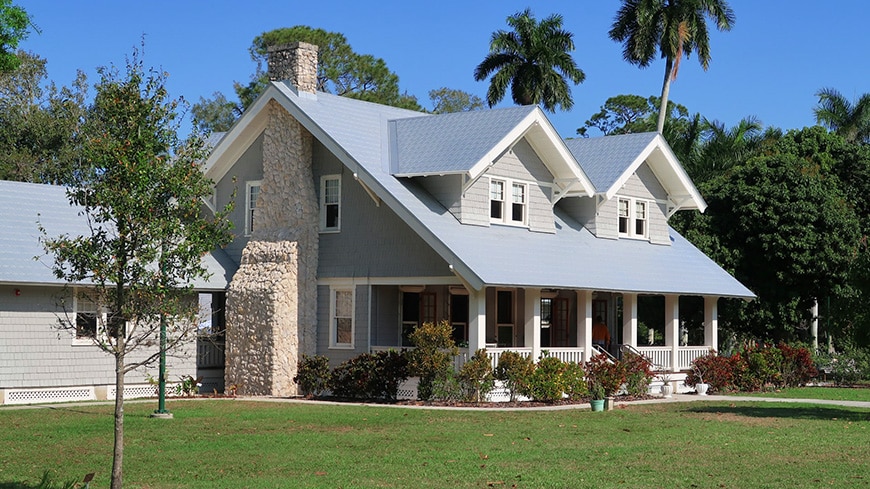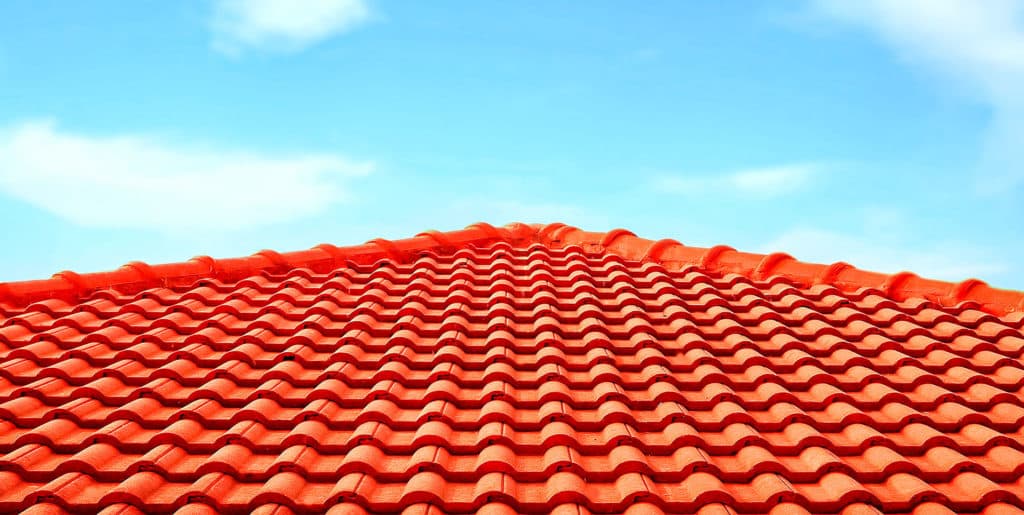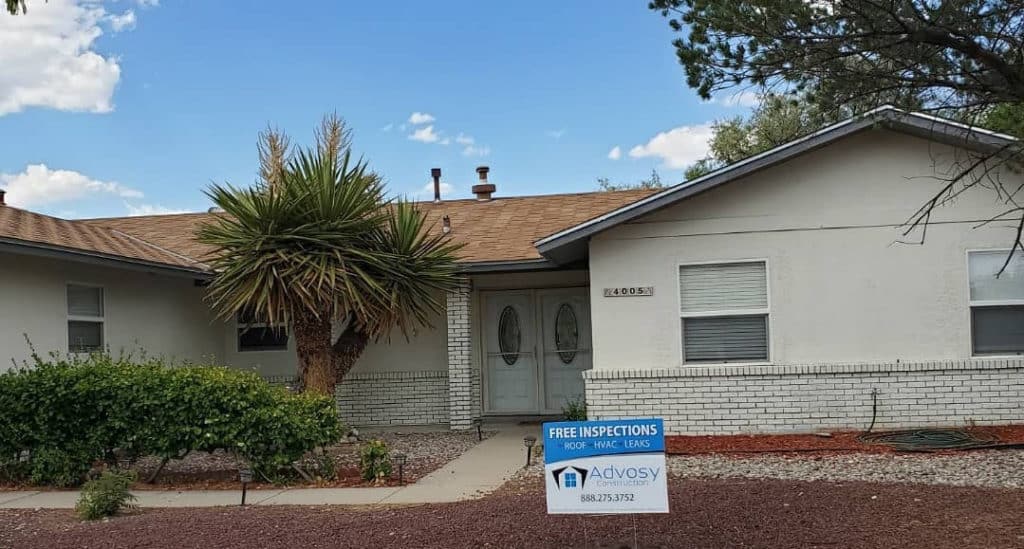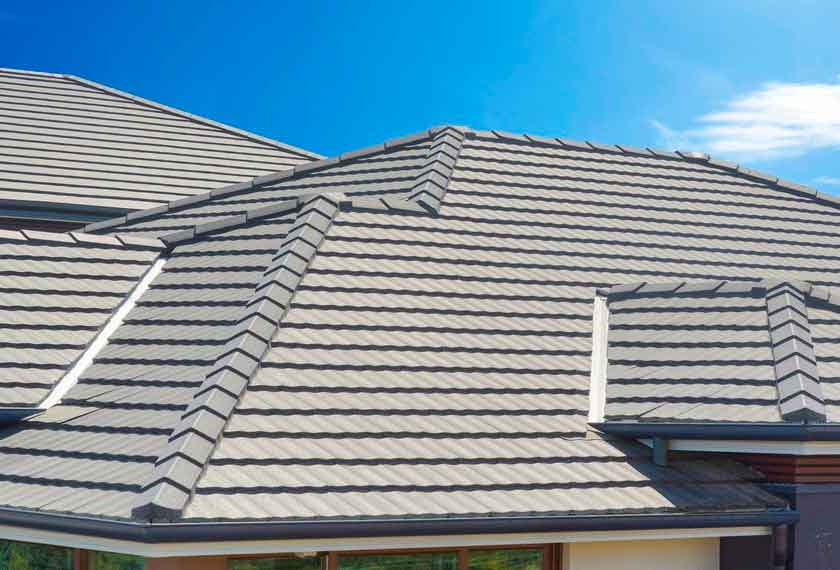The use of different colored roofing materials can have a significant impact on the energy efficiency of homes and buildings. With current concerns about global warming, many people are looking for ways to reduce their carbon footprint. By utilizing certain colors of roofing material, homeowners and developers alike can help create an overall more efficient building system that saves money in the long run. This article will explore the various types of roofing materials available, as well as how they can affect energy efficiency in both residential and commercial settings.
In order to examine how color impacts energy efficiency, it is important to understand what type of roofing material is being used. Different materials such as asphalt shingle, metal roofing, slate tile, concrete tile or clay tile each absorb heat differently when exposed to sunlight. Furthermore, each of these materials come in numerous shades which also affects their ability to reflect light away from the home or building’s interior space. It has been suggested that lighter colored roofs reflect more light than darker ones, leading to cooler temperatures inside the structure during summer months.
Factors To Consider When Choosing A Roofing Color
When selecting a roofing color, one must consider several factors. The climate is the primary factor as lighter colors absorb less heat but also reflect more light and may cause glare in direct sunlight. Additionally, the material of the roof should be taken into account when choosing a color: metal reflects more than asphalt shingles. Finally, local building regulations need to be adhered to; certain regions have restrictions on what colors can be used for residential buildings.
The impact that roofing material color has on energy efficiency needs to be evaluated in order to make an informed decision. In general, darker materials are better at absorbing solar radiation while lighter materials are better at reflecting it back out which results in lower energy consumption costs over time. However, this depends greatly on regional climates and other environmental conditions, so research must be done prior to settling on any particular choice.
Benefits Of Darker Roofing Colors
In order to make an informed decision when choosing a roofing material color, it is important to consider the benefits of darker shades. Darker colors absorb heat from the sun’s radiation more efficiently than lighter colors, which can lead to improved energy efficiency in buildings. Research has shown that dark roofs have been found to reduce summer cooling costs by up to 20%. This is because they retain less heat due to their higher emissivity, allowing for better regulation of indoor temperatures and reduced reliance on air conditioning systems.
Darker materials also tend to last longer as they are not exposed to ultraviolet rays as much as lighter colored ones. Additionally, the use of reflective surfaces such as metal or asphalt shingles can be combined with dark colors in order to further increase reflectivity and improve energy efficiency. The combination of these two features makes them ideal for reducing the amount of energy needed for heating and cooling applications.
The selection of a roofing material color requires careful consideration based on factors such as climate conditions, building location, and budget constraints; however, potential advantages associated with darker colors should not be overlooked when making this choice. With proper installation techniques and maintenance practices, homeowners can benefit significantly from selecting darker roofing products.
Benefits Of Lighter Roofing Colors
The benefits of lighter roofing colors for energy efficiency are numerous. Lighter roofs can reflect more sunlight than darker ones, which helps keep buildings cooler in hot weather. This reduces the amount of air conditioning needed to maintain a comfortable temperature indoors and leads to lower electricity bills. In addition, lighter colored roofs absorb less heat from the sun’s rays, meaning that they require less insulation—which further contributes to decreased energy costs.
Studies have also found that lighter-colored roofs tend to last longer because they don’t suffer as much damage due to extreme temperatures or ultraviolet light exposure as compared with darker materials. Furthermore, since lighter-hued rooftops need less maintenance due to having fewer physical issues over time, there is added savings associated with these types of roofs. Overall, lighter color roofing material can be an effective way to reduce energy consumption and long-term expenses related to heating and cooling.
Overview Of Energy-Efficient Roofing Materials
When choosing a roofing material for energy efficiency, certain characteristics should be taken into account. This section will provide an overview of the most common types of energy-efficient roofing materials and their properties.
The first type is metal roofs which are made with aluminum or steel panels that have been coated to reflect sunlight away from the building. These materials can reduce cooling costs by up to 25%. Additionally, they are durable and long lasting. The second type is clay or concrete tiles which offer insulation benefits due to their thickness and design. They also come in various colors so they can match the overall aesthetic of the home. Lastly, there are synthetic membranes such as modified bitumen, single ply PVC, ethylene propylene rubber (EPDM) and other thermoplastic based compounds that create waterproof barriers on roofs while providing some degree of thermal insulation depending on its composition. All these options provide a cost effective way to upgrade existing buildings and take advantage of energy efficient measures when constructing new ones.
The Role Of Insulation In Energy Efficiency
Insulation plays an important role in energy efficiency when it comes to roofing, as it helps to regulate the temperature of a building. The material used for insulation can significantly impact the amount of energy needed to maintain a consistent temperature throughout a structure, and therefore should be carefully chosen with regard to its thermal properties. R-value is one measure that can help evaluate how good an insulation material will perform; this is essentially a rating system which measures how well materials resist heat flow from one side to the other.
It stands to reason then, that higher R-values indicate better insulated materials meaning greater energy savings. Furthermore, the type of insulation being utilized must also be deemed suitable for use in conjunction with the intended application – whether this be residential or commercial buildings – as certain types may not meet industry standards. Therefore careful consideration needs to taken when selecting an appropriate form of insulation.
How To Maximize Energy Efficiency With Roofing Color
When it comes to the impact of roofing material color on energy efficiency, a key factor is how to maximize this effect. For example, lighter colors are known to reflect more sunlight than darker colors and can thus help reduce cooling costs in hot climates. However, other factors should also be considered when deciding between different colored materials for a roof. Insulation plays an important role in reducing heat transfer through the building envelope; therefore, selecting appropriate insulation levels in tandem with choosing reflective roofing material is paramount for effective energy savings.
In addition to considering insulation levels and color selection of roofing material, proper installation techniques must be employed as well. Poorly installed roofs may not perform optimally regardless of the type or color of material used if they do not sufficiently block air infiltration or moisture entry into the building envelope. Therefore, correct installation methods should always be followed when determining how to maximize energy efficiency with roofing color.
Maintenance Tips For Energy-Efficient Roofs
The use of roofing materials with energy-efficient properties has become increasingly popular in the recent years. To ensure optimal performance, however, regular maintenance is required. To start off, it is important to check for any signs of damage or wear that could compromise the integrity of the roofing material. Inspections should be done regularly, preferably once a year, looking for cracks, missing shingles, or other areas where heat might escape from inside the building.
In addition to these measures, cleaning gutters twice a year may prevent water accumulation on top of the roof which can cause mold growth and potential leaks over time. Moreover, applying sealants when necessary helps protect against moisture and improve resistance to extreme temperatures while preserving color vibrancy in darker shades of roofs. Taking such preventive steps allows roofs made out of reflective surfaces like metal or white ceramic tiles to remain effective at reflecting sunlight away from buildings during hot summer days. All in all, following these guidelines will aid in keeping energy-efficient roofs performing optimally over their lifetime.





